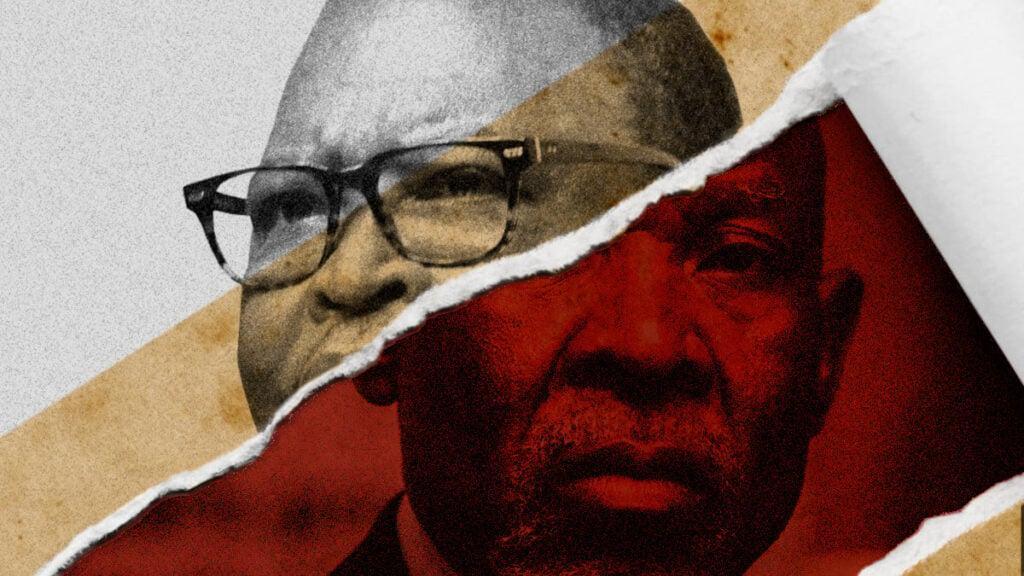Africa-Press – South-Africa. South Africa’s central bank has unilaterally lowered its inflation target, bypassing the finance ministry, which insists it alone holds the authority to set policy.
Despite ongoing talks with the National Treasury, Reserve Bank Governor Lesetja Kganyago announced Thursday that the bank will now aim for 3% inflation, the bottom of its target band.
While the shift, unveiled at a briefing north of Johannesburg has pleased financial markets — with the yield on benchmark 2035 government bonds falling to the lowest in more than five years — the Treasury hasn’t signed off on the move.
Responding the Kganyago’s announcement, Finance Mininster Enoch Godongwana issued a statement saying that there has been no official change to the inflation target, and that he would make no such change at the Medium-Term Budget Policy Statement (MTBPS).
He said the announcement created an expectation that the National Treasury would confirming the Reserve Bank’s move at the next budget address, but he stated categorically that he has no plans to do this.
“It is well-established that policy making responsibility in this area resides with the Minister of Finance, working with the President and Cabinet, who sets the inflation target in consultation with the South African Reserve Bank.”
“The SARB then operates independently in its pursuit of the inflation target. This means comprehensive consultation between National Treasury, the Reserve Bank, Cabinet, and relevant stakeholders – not unilateral announcements that pre-empt legitimate policy deliberation.”
“Any changes to the target, if necessary, will follow this process that I have outlined above,” Godongwana said.
Kganyago explained that the Reserve Bank sees an opportunity “right now” to pivot to the target. “And whilst the mill is grinding, why would we want to miss the opportunity?”
Notably, the central bank said it “prefers” the 3% target, which is still within the official 3% to 6% range.
However, many are seeing the latest MPC statement as a de facto move to the new target, which is likely to ruffle feathers in government and other stakeholders.
Opposition to inflation targets
Reserve Bank Governor, Lesetja Kganyago
Labour unionists and some politicians have opposed inflation targeting since South Africa adopted the framework in 2000, arguing that the central bank should prioritize economic growth and jobs instead. The shift to an even stricter target is likely to deepen their discontent.
Finance Minister Enoch Godongwana, in response to Bloomberg’s questions, said any policy changes would be communicated through meetings with the central bank and the medium-term budget statement in October.
He declined to discuss the Treasury’s interactions with the bank through the media.
While the bank had already prepared the markets for a policy adjustment, the fact that it went ahead “without an official change of target by the National Treasury was a bit of a shock,” given that it previously communicated that it would prefer to secure the Treasury’s blessing, Barclays Plc economist Michael Kafe said in a research note.
It appears that “the monetary authorities decided to seize the current low-inflation window to change their target preference before it closes, with or without buy-in from the Treasury,” he said.
The bank previously sought to anchor inflation expectations at the midpoint of its 3% to 6% target band, and has called for a lowering of the goal for years.
Its rationale is that higher inflation erodes economic competitiveness and keeps interest rates higher than than they would otherwise have been, which slows output and investment.
Godongwana last month said that while the Treasury agreed that lower inflation was good for the economy, there had been “some confusion as to process of setting inflation-targeting policy in South Africa” and that responsibility resides with the minister of finance, who sets the goal in consultation with the South African Reserve Bank.
The central bank has grown impatient and frustrated with the Treasury’s lethargy when it comes to changing the target, but doesn’t have the authority to simply go ahead and do it, and the finance minister may feel undermined, said independent analyst Khaya Sithole.
It isn’t clear why the Treasury is taking so long to make up its mind about a change “when everyone agrees that we need a lower inflation target,” Sithole said. “We just need to design the mechanics and let the Reserve Bank execute on it.”
Kganyago is a former director-general of the Treasury, which has always had a good working relationship with the central bank.
De Facto Change
While the governor specified that the inflation target itself hadn’t been adjusted, his comments amounted to a de facto change “in the preferred level of inflation, and monetary policy will now work towards its achievement,” said Razia Khan, chief economist for Africa and the Middle East at Standard Chartered Plc. “This is a significant macroeconomic positive.”
The Congress of South African Trade Unions, the country’s biggest labour group, cautioned that the policy shift would impact negatively on ordinary citizens.
“Workers are battling suffocating debt and are unable to keep pace with the rising cost of living,” said Zanele Sabela, the federation’s spokesperson.
“Were the SARB to implement this now, there would be no repo rate cuts for the foreseeable future and working class and poor would suffer the most.”
The central bank’s forecasting model, which serves as a guide, shows the benchmark rate at 6.69% at the end of this year and 5.98% at the end of 2026. It is currently at 7%.
The annual inflation rate stood at 3% in June and the bank expects it to average 3.3% this year and next.
“Changing policy is never easy,” Kganyago said. “There is no such thing as a costless policy. What you can’t do is to refuse to make a decision.”
For More News And Analysis About South-Africa Follow Africa-Press






